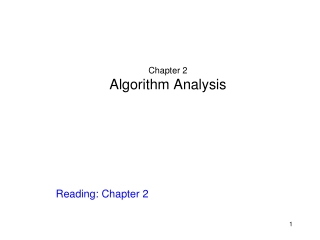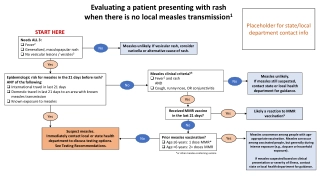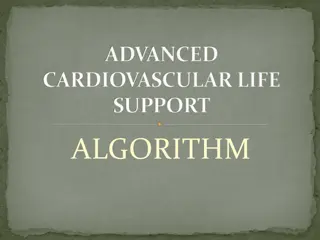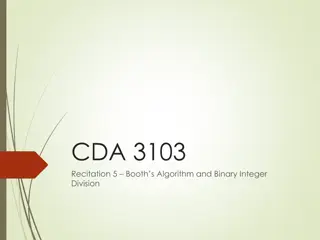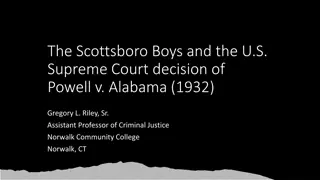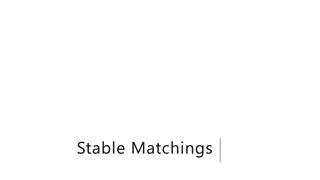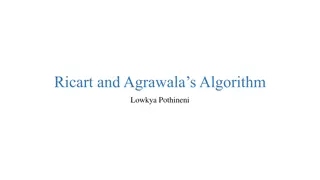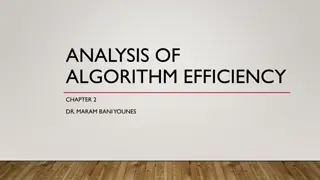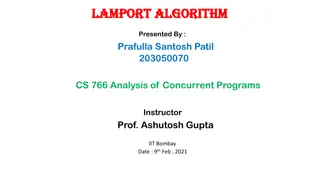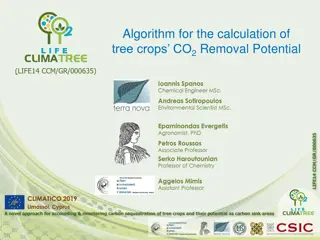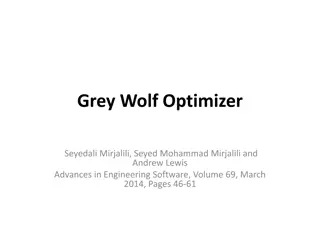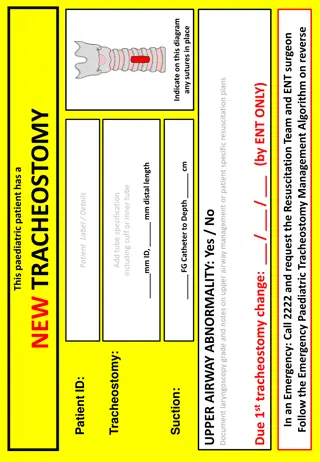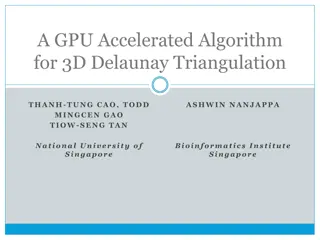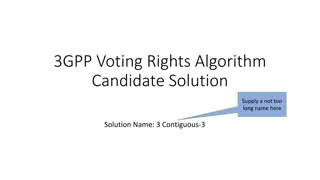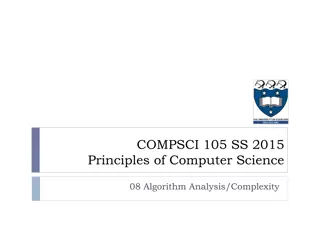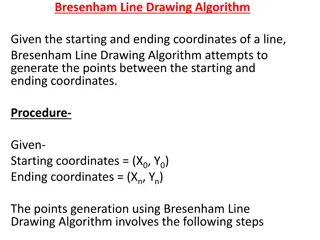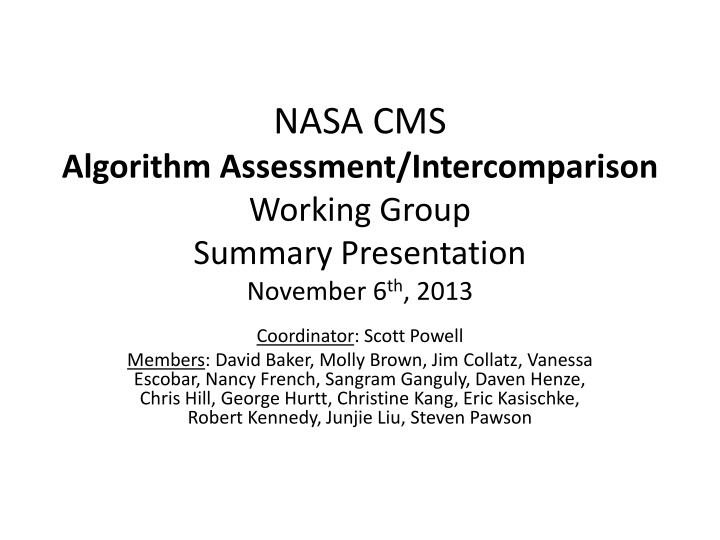
NASA CMS Algorithm Intercomparison Activities Summary
This summary presentation from the NASA CMS Algorithm Assessment/Intercomparison Working Group outlines a comprehensive assessment of intercomparison activities within primary domains including biomass, flux, and oceans. It covers gaps for further efforts, effective strategies, soliciting team input, documenting best practices, and current/anticipated efforts within biomass studies. Key members contributing to intercomparison activities are highlighted with a focus on improving forest biomass mapping accuracy, carbon monitoring, and modeling at a local scale.
Download Presentation

Please find below an Image/Link to download the presentation.
The content on the website is provided AS IS for your information and personal use only. It may not be sold, licensed, or shared on other websites without obtaining consent from the author. If you encounter any issues during the download, it is possible that the publisher has removed the file from their server.
You are allowed to download the files provided on this website for personal or commercial use, subject to the condition that they are used lawfully. All files are the property of their respective owners.
The content on the website is provided AS IS for your information and personal use only. It may not be sold, licensed, or shared on other websites without obtaining consent from the author.
E N D
Presentation Transcript
NASA CMS Algorithm Assessment/Intercomparison Working Group Summary Presentation November 6th, 2013 Coordinator: Scott Powell Members: David Baker, Molly Brown, Jim Collatz, Vanessa Escobar, Nancy French, Sangram Ganguly, Daven Henze, Chris Hill, George Hurtt, Christine Kang, Eric Kasischke, Robert Kennedy, Junjie Liu, Steven Pawson
Charge Document the range of intercomparison activities within each of the primary domains (biomass, flux, oceans). Identify key gaps where further intercomparison efforts are warranted. Document effective strategies for intercomparison activities.
Approach Solicit CMS team input to survey question about intercomparison efforts. Discussion among Working Group members to document best-practices for intercomparison activities.
Results Documentation of current and anticipated intercomparison efforts by primary domain (Biomass, Flux, Oceans).
Intercomparison Activities Local scale cross validation PI/CMS Biomass Studies Cook: Improving forest biomass mapping accuracy with optical-LIDAR data and hierarchical Bayesian spatial models Dubayah: High Resolution Carbon Monitoring and Modeling: A CMS Phase 2 Study Comparison to national scale maps (NBCD, FIA, CMS P1) Comparisons between lidar and FIA biomass maps and ED modeled biomass at local scale Estimates can be compared with field-based estimates in countries with an established national forest inventory Previous estimates of tropical emissions from land use and land-cover change Healey: A global forest biomass inventory based upon GLAS lidar data Houghton: Spatially explicit sources and sinks of carbon from deforestation, reforestation, growth and degradation in the tropics: Development of a method and a 10-year data set 2000-2010 Kasischke: The Forest Disturbance Carbon Tracking System A CMS Phase 2 Study Intercomparison of carbon consumed during fires will be carried out between different modeling approaches database Comparison to national scale maps (NBCD, FIA, CMS P1) Comparison at select sites to lidar-based estimates Comparison to national scale maps (NBCD, FIA) and fire emissions Kennedy: Integrating and Expanding a Regional Carbon Monitoring System into the NASA CMS Saatchi: Prototyping MRV Systems Based on Systematic and Spatial Estimates of Carbon Stock and Stock Changes of Forestlands
Results Emerging discussion about effective strategies for intercomparisons. Differences due to data, methods, scale, etc...
Next Steps Incorporate new Phase II projects into documentation. Continue to seek project- and domain-level input to finalize documentation. Continue domain-level discussions on effective strategies for intercomparison activities, especially Flux and Oceans.

